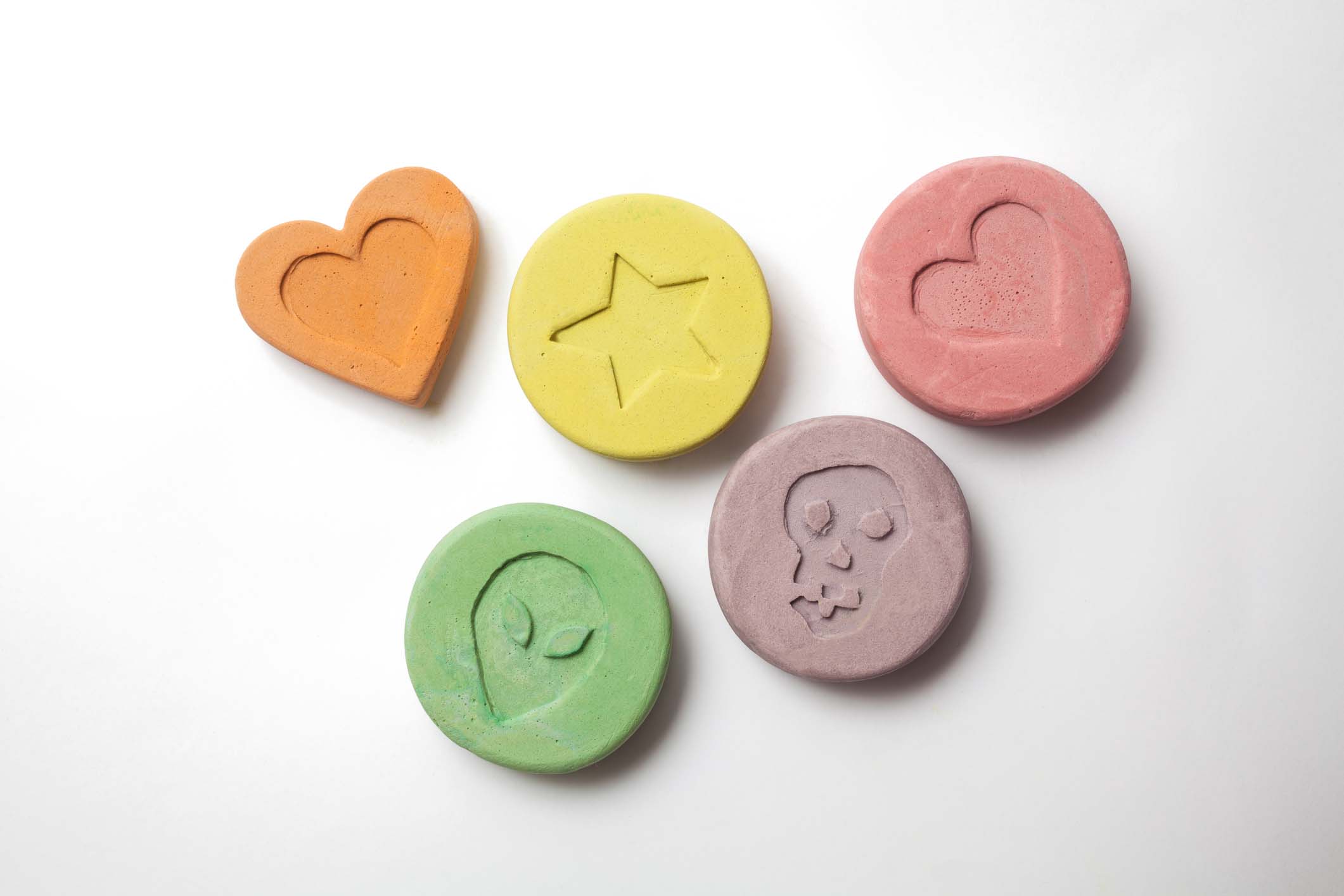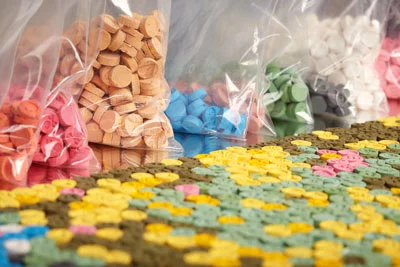The MDMA Drug and Its Impact on the Australian Workplace

MDMA use is on the rise in Australia. In a shocking statement, even NSW Greens MP Cate Faehrmann recently came out about her own experience using drugs.
In her own words: “I’ve occasionally taken MDMA at dance parties and music festivals. I know journalists, tradies, lawyers, public servants, doctors, police and yes, politicians (most well into their forties), who have done the same.”
If Australians in high and respectable positions have taken MDMA — can you be sure that someone in your staff is not an MDMA user?
Over the past 6 months, there have been five drug-related deaths attributed to MDMA. The spotlight is now on this illicit drug.
What is MDMA?
MDMA or methylenedioxymethamphetamine is a derivative of amphetamine. It is also referred to as ecstasy and Molly, although there are some significant differences.
MDMA vs Ecstasy
A common street name for MDMA is ecstasy.
When Ecstasy boomed in popularity in the early 1980s, it tended to consist of pure MDMA, or sometimes its chemical sister MDA (3,4-methylenedioxyamphetamine). But after MDMA became illegal in the U.S. in 1985, purity began to decrease.
Throughout the 1990s and 2000s, drugs such as cocaine, ketamine and methamphetamine were common adulterants in Ecstasy.
MDMA vs Molly
The term Molly is short for “molecular.” It was given this nickname because this ecstasy drug comes in powder or crystallised form, as opposed to the more traditional pill.
It is commonly marketed as being pure MDMA. But Molly is often the furthest thing from pure MDMA. Synthetic cathinones, also known as “bath salts,” appear to be the most common adulterants or outright replacements.

What makes MDMA particularly dangerous
According to Dr. Judith Perl, a clinical pharmacologist, what makes MDMA particularly dangerous is that the user can never really know the actual MDMA dose they’re taking, much less know what’s in them.
“Often what is sold as MDMA can have other impurities, like MDA (methylenedioxyamphetamine) or PMA (para-Methoxyamphetamine) which can increase the toxicity,” she said.
Dr. Perl also explained that MDMA deaths are mostly due to complications. As the drug greatly impacts the user’s blood pressure, heart rate, and body temperature.
Worryingly, she adds that those who drive under the influence of MDMA are impaired and face the greatest and most fatal risks.
At present, MDMA is more accessible than ever before. Ninety percent of users in the survey describe it as “easy to obtain.” Five or six years ago, only 70 percent of users found it easy to obtain.
Analysis of the Ecstasy and Related Drugs Reporting System (EDRS) reveals that more than one in four people who take stimulants are taking ecstasy on a weekly basis.
The Average MDMA Drug User: Educated and Employed
In an effort to make festivals safer, the National Drug and Alcohol Research Centre interviewed 299 regular users of ecstasy. The average age of participants in the study is 21. And the vast majority were either in school or gainfully employed.
The study shed light on the behavior of MDMA users: they rarely take the drug alone. Nine in ten reported that the last time they used the illicit stimulant, they combined it with alcohol, cannabis, and hallucinogens.
In the AIHW National Drug Strategy Household Survey 2016, MDMA or ecstasy takes the second place in the most commonly used illicit drug by Australians.
Furthermore, the highest rate of illicit drug use (55 percent) is among 30 to 39-year-olds. Next are 40 to 49-year-olds (under 55 percent), then 20 to 29-year-olds (49 percent), lastly are 50 to 59-year-olds (48 percent).
The profile of who uses illicit drugs in Australia is a surprise. It dispels the myth that drug use is prevalent only among the young, uneducated, homeless and unemployed.
In fact, people with post-school qualifications have a 47 percent rate of lifetime drug use. The rate for people with no post-school qualifications is much lower at 34%
In addition, people in the paid workforce have a 51 percent rate of lifetime drug use, compared to 43% among the unemployed.
The results speak for themselves: MDMA drug use is prevalent among adults in the workforce. Imagine these MDMA users driving cars, operating systems, flying planes, and performing surgeries.
It’s a harrowing prospect for a business owner, which is why it is imperative to address MDMA use early on before the stakes get higher.
Long-Term Effects of MDMA Use
Dr. Amy Peacock, the head of NDRAC’s Drug Trend’s project expressed concern over the long-term effects of MDMA use, such as:
- irregular heartbeat
- psychosis
- chronic headaches
- seizures
- kidney failure
- hemorrhaging
- a permanent change in brain function
- memory loss
- depression
For users with pre-existing health conditions, the risks are greater. In fact, most drug deaths that involve MDMA are due to complications and fatal reactions.

The MDMA Drug and Its Impact on the Australian Workplace
Having an MDMA user on staff comes with serious risks. Drugs, along with alcohol, cost Australian businesses an estimated $6 billion per year in lost productivity.
An estimated 2.5 million days are lost due to drug and alcohol use, costing Australian businesses $680 million. The staggering figures do not include the safety issues that come with having a drug using employee.
Workers in safety-sensitive industries who use MDMA are putting not only themselves in danger but also others. While the effects of ecstasy last 24 hours, residual effects can last for days. So if an employee takes ecstasy over the weekend, he or she will be experiencing the aftereffects while at work.
The stigma surrounding illicit drug use and a lack of a workplace drug policy is a potentially lethal combination. By the time MDMA use is found out, it’s usually too late.
An employee who takes MDMA over the weekend will usually carry over the aftereffects into work. A user coming down on ecstasy will suffer from the following:
- Anxiety
- Paranoia
- Impaired judgment
- Lack of focus
- Poor concentration
- Blurred vision
- Muscle tension
As an employer, you are responsible for any accidents at work that involve ecstasy use. In effect, you are legally bound to pay for Workman’s Compensation claims.
Things could get worse if an employee files a case against negligence in court. And the bills from the litigation process can easily pile up in a short span of time.
The good news is, you can proactively protect your business and employees from the dangers of MDMA use.
Testing For Ecstasy At Work
You do not want ecstasy users in safety-sensitive jobs where they operate heavy equipment or transport people or goods.
With a workplace drug program that includes testing for ecstasy and MDMA, you’ll find out who among your employees take ecstasy. After which, you can take the necessary steps as stated in the workplace drug policy. This is the best thing that you can do to address ecstasy use at work.
Safework Health offer safe, hygienic, and discreet onsite testing for ecstasy so there is minimal disruption to your workforce. We can also help you develop a comprehensive MDMA safe workplace program that includes education programs that deter drug use among your employees.
If you want to find out more about developing a drug policy or ecstasy testing, please get in touch with us today. All our discussions are strictly confidential.
